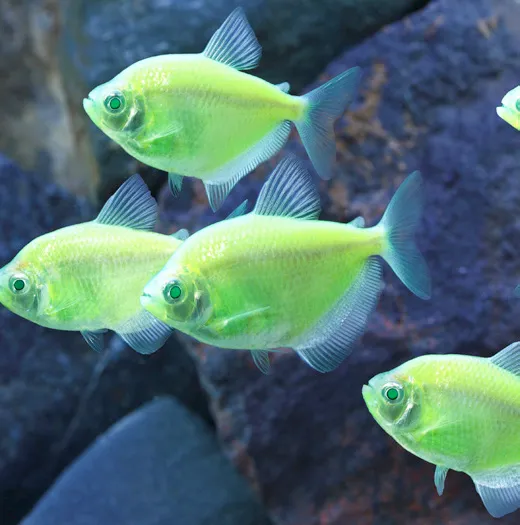'Illegal' School Science Kits
Siouxsie Wiles - 1st May 2015

The Dominion Post recently ran an article about “Glowing GE bacteria” which were “produced illegally in New Zealand using mail-order kits from America”. Perhaps unsurprisingly given that the phrase ‘genetically engineered’ was mentioned, Green MP Stefan Browning and GE Free New Zealand spokesperson Jon Carapiet chimed in to share their dismay that people/kids were fiddling with complex natural systems and things that posed a threat to our GE-free status (which we aren’t). I’m paraphrasing here, but I think that was the sum of it. The usual GE = evil sort of stuff. Let’s look at what happened and if it posed any risk to anyone.
Who made what and why was it illegal?
A global biotech company originally founded in the USA, and which makes lots of laboratory reagents scientists like me commonly use, make a kit for school kids to teach them about genes. The kit includes a piece of DNA called a plasmid*, and a harmless strain of the bacterium E. coli. Heat the bacteria up a little and they will take up the plasmid DNA, technically creating a genetically engineered strain of E. coli.
In this case, the plasmid carries the gene for an amazing jellyfish protein called Green Fluorescent Protein (GFP). When you shine light of a particular wavelength at GFP, it emits a beautiful green light. So once the E. coli have the plasmid and the GFP gene is turned on, the bacteria glow green.
So it turns out that two educational facilities in NZ imported the kits from the USA (which is allowed) and then presumably used them to teach people (presumably kids or undergraduates?) how bacteria can be manipulated to express different genes, and how genes can be turned on and off. The problem is that in NZ, thanks to the Hazardous Substances and New Organisms Act**, such genetic modification can only be done with approval from the Ministry for Primary Industries and in suitable containment facilities, like the one I work in. Because this is what my team and I do for a living. We use genes from other glowing creatures like fireflies, only we put them into nasty bacteria, not harmless strains of E. coli. And we have all the relevant paperwork. Reams and reams of it.
My guess is that in this case, the kit was perhaps used without the proper approvals, or outside of a proper containment lab, or someone who made the modified bacteria in a containment lab thought it was so cool they took it home. Any of those scenarios would be illegal. But let’s be clear. The bacteria ‘created’ is harmless and highly unlikely to pose any threat to NZ’s environment. In the USA (with the exception of California, I’m told, who are as hysterical about genetic engineering as NZ), you can buy pet fish which express GFP and other fluorescent proteins. They are beautiful.
NZ needs to have a rational discussion about genetic engineering
All around the world, the evidence shows that genetic engineering as a technique is safe. The hysteria and fearmongering of people like Browning and Carapiet isn’t helpful. NZ needs to have a rational discussion about the technology. If we decide to be GE free, it won’t be because the science is dangerous. It isn’t. It’ll be so that we can appeal to markets that want GE free products. That’s economics.
New Zealand’s ludicrous New Organism designation
As a final comment, the Act’s definition of a New Organism is problematic, especially for microbiologists. Here’s the definition:
A new organism is—
-
an organism belonging to a species that was not present in New Zealand immediately before 29 July 1998:
-
an organism belonging to a species, subspecies, infrasubspecies, variety, strain, or cultivar prescribed as a risk species, where that organism was not present in New Zealand at the time of promulgation of the relevant regulation:
-
an organism for which a containment approval has been given under this Act:
-
an organism for which a conditional release approval has been given:
-
a qualifying organism approved for release with controls:
-
a genetically modified organism:
-
an organism that belongs to a species, subspecies, infrasubspecies, variety, strain, or cultivar that has been eradicated from New Zealand.
Read part (a) again. If an organism is not on any database or listed in a paper as showing it was present in NZ before 29 July 1998, it’s considered a new organism. I’m told the first time NZ researchers sequenced the gut microbiome of a person in NZ, they came across a whole heap of microbes that according to the law didn’t exist in NZ. Seriously. The flip side to this, of course, is that each time anyone comes here from overseas, be it a holiday-maker or NZ resident returning from a trip, they are likely bringing in a whole heap of new (micro)organisms in or on their person. And there’s not much the government can do about that!
*A plasmid is a piece of DNA that exists outside of an organisms chromosome and can replicate itself independently. The wikipedia page for plasmids uses a nice analogy – think of the chromosome of the organism as its hard drive; a plasmid is like a USB drive that contains extra information.
**According to the Hazardous Substances and New Organisms Act, its purpose is “to protect the environment, and the health and safety of people and communities, by preventing or managing the adverse effects of hazardous substances and new organisms”.